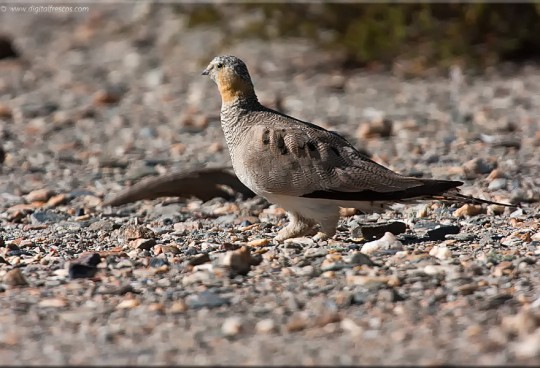The toco toucan (Ramphastos toco), also known as the common toucan, giant toucan or simply toucan, is the largest and probably the best known species in the toucan family. It is found in semi-open habitats throughout a large part of central and eastern South America. It is a common attraction in zoos. The Toco Toucan is the one of the most recognizable tropical birds in the Americas. The only non-forest toucan, the Toco Toucan is found along forest edges and in low wet grassland from Guyana south to Argentina, and from central Brazil west to southeastern Peru. Toco Toucans are the largest species of toucan and can be identified by their black body, white bib, red undertail coverts and large red-orange bill. Toco Toucans feed extensively on figs and other fruit, and also occasionally prey on insects and nestling birds. When foraging, these birds travel in small groups in the canopy, gliding in single file from site to site. The toco toucan has a striking plumage with a mainly black body, a white throat, chest and uppertail-coverts, and red undertail-coverts. What appears to be a blue iris is actually thin blue skin around the eye. This blue skin is surrounded by another ring of bare, orange skin. The most noticeable feature, however, is its huge bill, which measures from 15.8 to 23 cm (6.2 to 9.1 in) in length, which is yellow-orange, tending to deeper reddish-orange on its lower sections and culmen, and with a black base and large spot on the tip. The bill is the largest relative to body size of all birds providing 30 to 50% of its body surface area, although another Neotropical species, the sword-billed hummingbird, has a longer bill relative to its body length.
Although primarily frugivores, Toco Toucans also commonly eat insects, and the eggs and nestlings of small or medium-sized birds. Among the fruit consumed by these toucans are figs, oranges, guavas, and peppers. Preferred insects include caterpillars and termites. When they predate nests of other birds, they target those of Yellow-rumped Caciques (Cacicus cela) in particular but toucans also prey on the nests of of other species of blackbirds (Icteridae) and of flycatchers (Tyrannidae). In captivity, Toco Toucans also eat smaller species of birds that enter the aviary, such as thrashers (Toxostoma sp.), House Sparrow (Passer domesticus), Inca Dove (Columbina inca), Cactus Wren (Campylorhynchus brunneicapillus), and Gambel’s Quail (Callipepla gambelii). Little is known about the metabolism of the Toco Toucan. This species can modify the amount of blood flow to its bill and therefore can use its bill as a thermal radiator to distribute heat away from its body. The toco toucan eats fruit using its bill to pluck them from trees, but also insects, frogs, small reptiles, small birds and their eggs and nestlings. The long bill is useful for reaching things that otherwise would be out-of-reach. It is typically seen in pairs or small groups. In flight it alternates between a burst of rapid flaps with the relatively short, rounded wings, and gliding. Nesting is seasonal, but timing differs between regions. The nest is typically placed high in a tree and consists of a cavity, at least part of which is excavated by the parent birds themselves. It is classified as least concern by IUCN.







Sorry, the comment form is closed at this time.